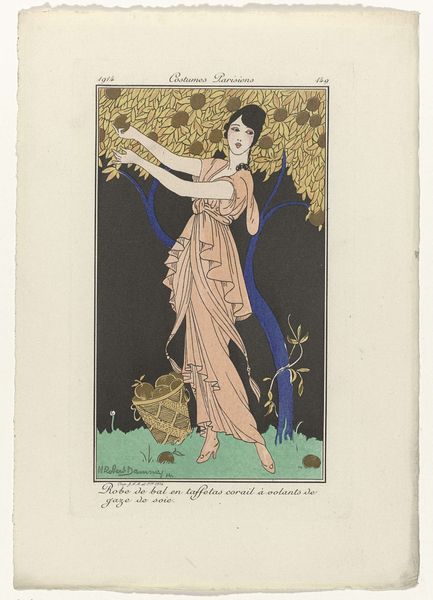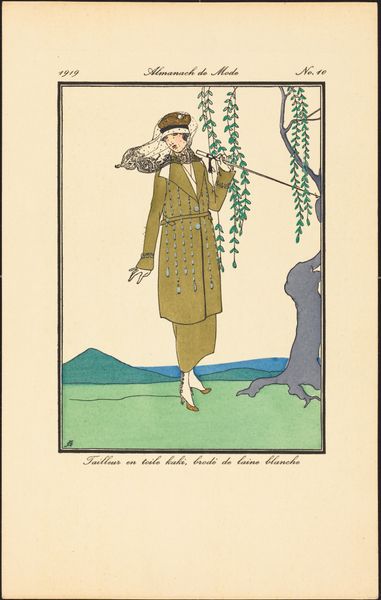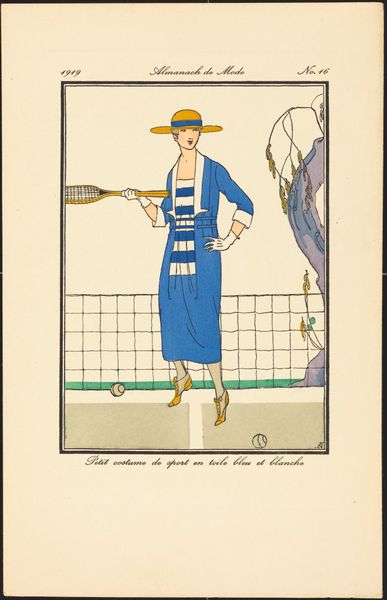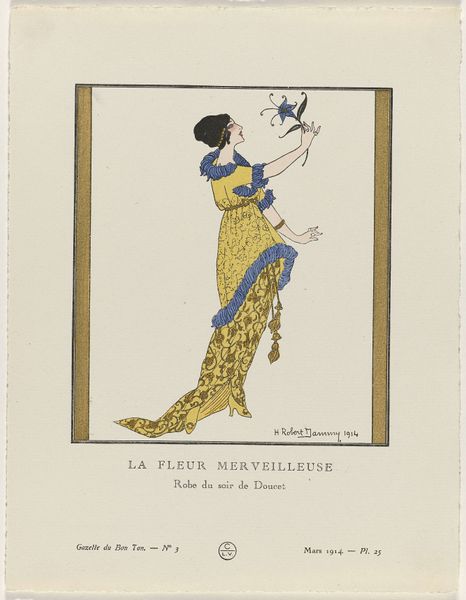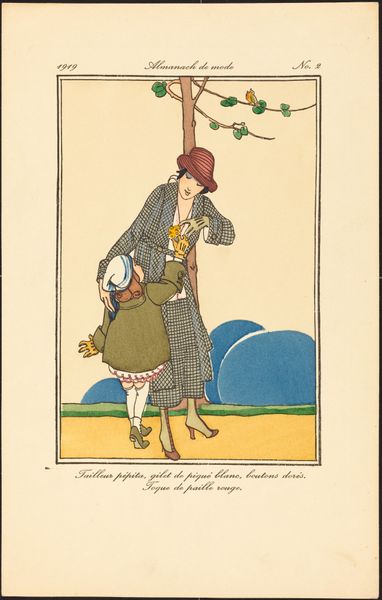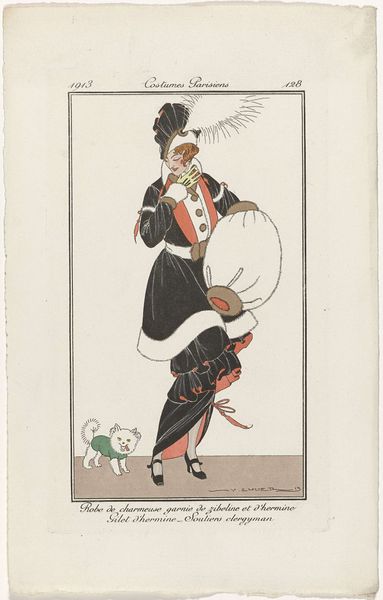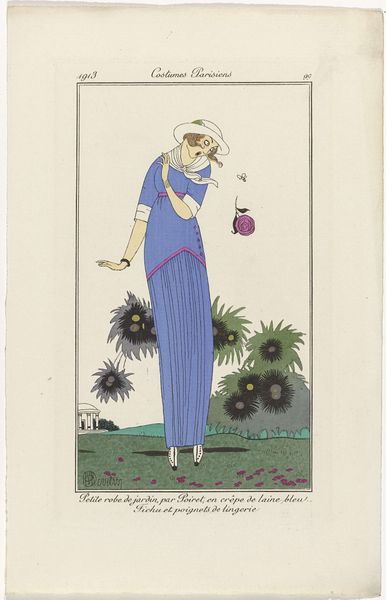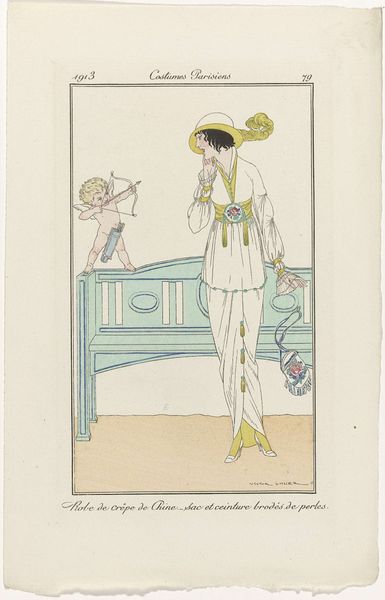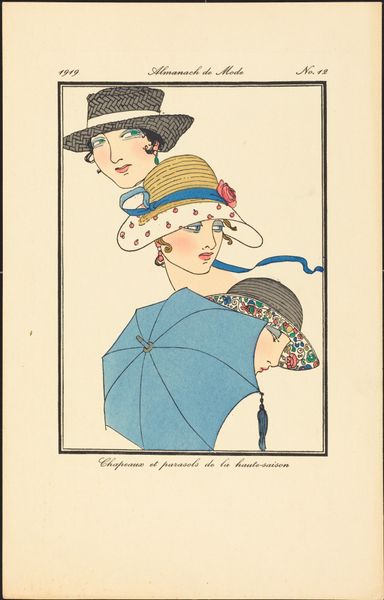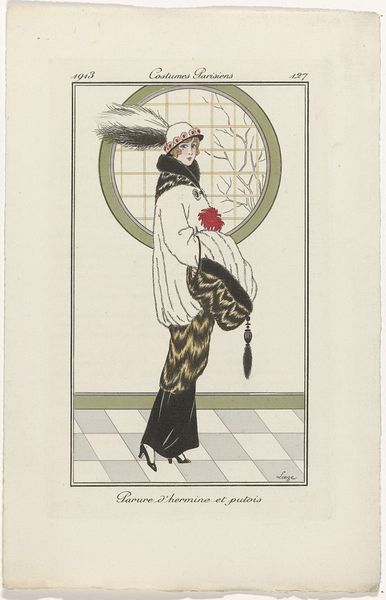
#
art-nouveau
# print
#
pen illustration
#
figuration
#
line
#
decorative-art
Dimensions: plate: 17.1 x 12 cm (6 3/4 x 4 3/4 in.) sheet: 22.5 x 14.2 cm (8 7/8 x 5 9/16 in.)
Copyright: National Gallery of Art: CC0 1.0
Editor: This is "Robe de jeune fille, en linon imprimé," a print from 1919. I’m struck by its delicacy; the light fabric of the dress seems almost to float off the page. What do you see when you look at this image? Curator: Initially, the application of line draws the eye. Note how the composition uses distinct, dark outlines to define shapes, reminiscent of cloisonnism, though lacking that movement’s symbolic intent. The artist segments the picture into clear components: figure, ground, and backdrop. This allows each element to be considered discretely, heightening their individual formal qualities. Editor: I see that now – especially how the colors are separated by those bold outlines. It does make each element stand out on its own! Curator: Exactly. And if we consider the tonality, the restricted palette with pastels creates an airy visual texture. Consider how that flatness interacts with the subtle gradient used in the dress; does this advance or impede our understanding of depth and form? Editor: I think it emphasizes the artificiality. It's pretty, but doesn't aim to be realistic. The details almost give the impression of a paper doll. Curator: An insightful reading. And it is crucial to analyze how this artificiality connects with similar aesthetics present throughout Art Nouveau in its stylized approach to decorative form. Notice the curve of the tree’s branch. It provides a compelling visual echo to the curve of the model’s pink sash and hat. Editor: I hadn't noticed that echo before! Focusing on form really unlocks another layer to the artwork. Curator: Precisely. Now consider how these individual formal aspects accumulate. Editor: This artwork feels more intriguing than I originally perceived; thank you.
Comments
No comments
Be the first to comment and join the conversation on the ultimate creative platform.
